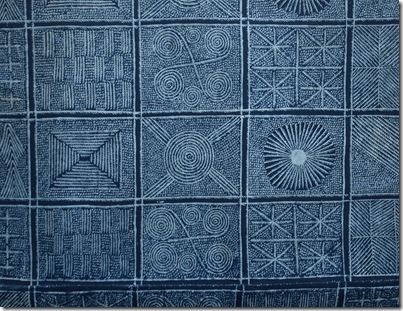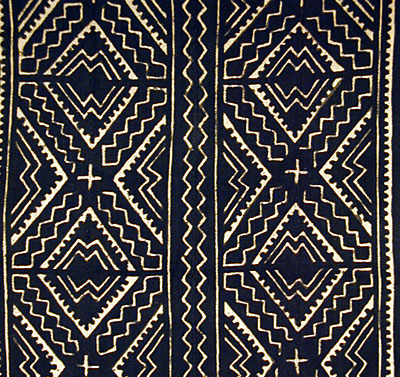African Commemorative Textiles : African Textiles
- Home
- African Print in the News
- Glossary of Fabrics
- The Textile Industry
- African Textiles
- Artists/Designers
- Articles/Journals
- Books/References
- Databases
- Other UW-Madison Resources
Area Studies Librarian
Questions?
This guide was created and managed by Kirstie Yu, with support from Emilie Songolo. For questions, contact kayu2@wisc.edu.
Kente, Ghana
 |
|
|
"Kente cloth, known as nwentoma in Akan, is a type of silk and cotton fabric made of interwoven cloth strips and is native to the Akan ethnic group of South Ghana. Kente cloth has its origin with the Ashanti Kingdom, and was adopted by people in Ivory Coast and many other West African counties. It is an Akan royal and sacred cloth worn only in times of extreme importance and was the cloth of kings. Over time, the use of kente became more widespread. However, its importance has remained and it is held in high esteem with Akans."
--Wikipedia
For more information, this article provides explanations of the significance of kente colors and patterns, as well as many photos of kente cloth being woven or worn. Additionally, this webpage provides more in-depth descriptions of kente colors and symbolism.
Adinkra, Akan
"Adinkra are visual symbols, originally created by the Akan, that represent concepts or aphorisms. Adinkra cloths were traditionally only worn by royalty and spiritual leaders for funerals and other very special occasions. They are now worn by anyone, stylishly wrapped around women or men on any special occasion."
--Wikipedia
You can view a chart of Adinkra symbol meanings at here, along with a description of the dyeing and stamping process. For an informative video, click here (note that it is Part 1 of 2).
Aso-Oke, Yoruba
 |
|
'Aso-Oke is a short form of Aso Ilu Oke also known as Aso-Ofi meaning clothes from the up-country. It is the traditional wear of the Yoruba's (the tribe of the southwest people in Nigeria, Africa). The Yoruba's are the second largest tribe in Nigeria after the Northerners. Aso-Oke is a cloth that is worn on special occasions by the Yoruba's usually for chieftancy, festivals, engagement, naming ceremony and other important events." |
This article gives an interesting interview with aso-oke weavers, while the Heritage Aso-Oke site briefly describes the different types of fabric and patterns.
Kanga
 |
|
"The kanga (or khanga; from the old Bantu (Kiswahili) verb ku-kanga, to wrap or close), is a colourful garment similar to kitenge, worn by women and occasionally by men throughout the African Great Lakes region. It is a piece of printed cotton fabric, about 1.5m by 1m, often with a border along all four sides (called pindo in Swahili), and a central part (mji) which differs in design from the borders." --Wikipedia |
To learn more about the significance and meaning of Swahili proverbs, click here. Additionally, the Databases tab includes some useful online resources for anyone interested in seeing more examples of kanga cloth.
Adire, Yoruba
Read this article to learn more about the history of adire cloth, or this one to see different dyeing patterns.
Asafo Flags, Fante
 |
|
"Asafo are traditional warrior groups in Akan culture. The word derives from sa, meaning war, and fo, meaning people. The traditional role of the asafo companies was defence of the state. As the result of contact with European colonial powers on the Gold Coast (present-day Ghana), the Fante, who inhabit the coastal region, developed an especially complex version of the concept in terms of its social and political organization based on martial principles, and with elaborate traditions of visual art, including flag banners with figurative scenes." --Wikipedia |
To see more examples of Asafo flags, check out this gallery.
Bogolan (Mud Cloth), Mali
This article provides an in-depth look at making of mud cloth as well as its use.
Bark Cloth, Uganda
"Bark cloth making is an ancient craft performed by the Baganda people who live in the Buganda kingdom in south Uganda. For over 600 years, craftsmen of the Ngonge clan have been manufacturing bark cloth for the Baganda royal family and the rest of the community, headed by akaboggoza, the hereditary chief craftsman, who lives in the Nsangwa village in Mawokota, situated in Mpigi District."
The Ugandan Bark Cloth Project is a blog that posts about anything to do with or about bark cloth. Click here to see a video about bark cloth's increasing popularity on fashion runways.


